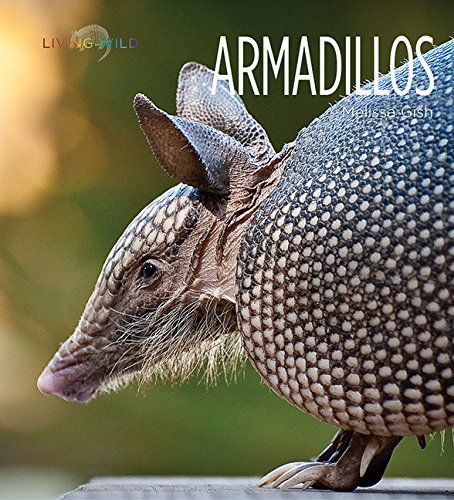-
The world of the wolf,
Russell J Rutter
Hardcover (Lippincott, March 15, 1968)A presentation of the habits and behavior of wolves throughout the year, and discussions of the voice of the wolf, wolves as individuals, and man's relationship to the wolf, especially his long persecution of the animal.
-
Living Wild: Flamingos
Melissa Gish
Paperback (Creative Paperbacks, March 17, 2015)The engineering skills of beavers, the showy plumage of flamingos, and the defining characteristics of six other fascinating animals are explored in the newest titles in the Living Wild series. Vivid photographs help take readers on a virtual field study to observe the life cycle and behaviors of each featured mammal, bird, and amphibian. Each book also looks at past and present scientific research and includes a unique storytelling element in the form of an animal tale drawn from mythology or folklore. Progressively complex text draws readers into this mainstay life science series, incorporating social studies, history, fine arts and pop culture. In this title take a scientific look at flamingos, including their habitats, physical characteristics such as their coloration, behaviors, relationships with humans, and numbers of the tropical birds in the world today. U
U
-
Armadillos
Melissa Gish
Paperback (Creative Paperbacks, March 7, 2017)Vivid photographs help take readers on a virtual field study to observe the life cycle and behaviors of each featured mammal, bird, or reptile. Each book also looks at past and present scientific research and includes a unique storytelling element in the form of an animal tale drawn from mythology or folklore. Progressively complex text draws readers into this interdisciplinary life science series. A look at armadillos, including their habitats, physical characteristics such as their armored bodies, behaviors, relationships with humans, and threatened status of some species in the world today. S
S
-
Living in a World of - White
Tanya Lee Stone
Hardcover (Blackbirch Press, Sept. 4, 2001)Sometimes survival means blending in to avoid the gaze of an enemy. Other times, camouflage enables an animal to lie in wait for a surprise attack on its prey. No matter how an animal uses its special appearance or abilities, each creature has adapted its behavior to perfectly suit the world in which it lives. The Living in a World of series offers a unique view of how animals are shaped by their habitats and how they have adapted to survive within them. Arctic hares actually change the color of their fur to match the season Decorator crabs cover themselves with seaweed and other materials that make them nearly invisible on the ocean bottom Chameleons at rest blend with their surroundings, but they can change the color of their skin at will -- displaying bright yellows and oranges to attract a mate or scare an enemy These are just a few of the many incredible ways that animals use camouflage to survive in their habitats. Included in these 4 volumes are: Glossary Index Resources for further study O
O
-
Red Pandas
Melissa Gish Creative Education
Library Binding (Creative Education/Creative Paperbacks, Sept. 15, 2018)A look at red pandas, including their habitats, physical characteristic such as their long, thick fur, behaviors, relationships with humans, and the numerous threats these elusive endangered bears face today. O
O
-
Living Wild: Pandas
Melissa Gish
Paperback (Creative Paperbacks, March 28, 2012)A look at pandas, including their habitats, physical characteristics such as their black-and-white fur, behaviors, relationships with humans, and threatened status in the world today. Y
Y
-
Living Wild: Brown Bears
Melissa Gish
Paperback (Creative Paperbacks, March 17, 2015)The engineering skills of beavers, the showy plumage of flamingos, and the defining characteristics of six other fascinating animals are explored in the newest titles in the Living Wild series. Vivid photographs help take readers on a virtual field study to observe the life cycle and behaviors of each featured mammal, bird, and amphibian. Each book also looks at past and present scientific research and includes a unique storytelling element in the form of an animal tale drawn from mythology or folklore. Progressively complex text draws readers into this mainstay life science series, incorporating social studies, history, fine arts and pop culture. In this title take a scientific look at brown bears, including their habitats, physical characteristics such as their coat, behaviors, relationships with humans, and elusiveness of the apex predators in the world today. T
T




